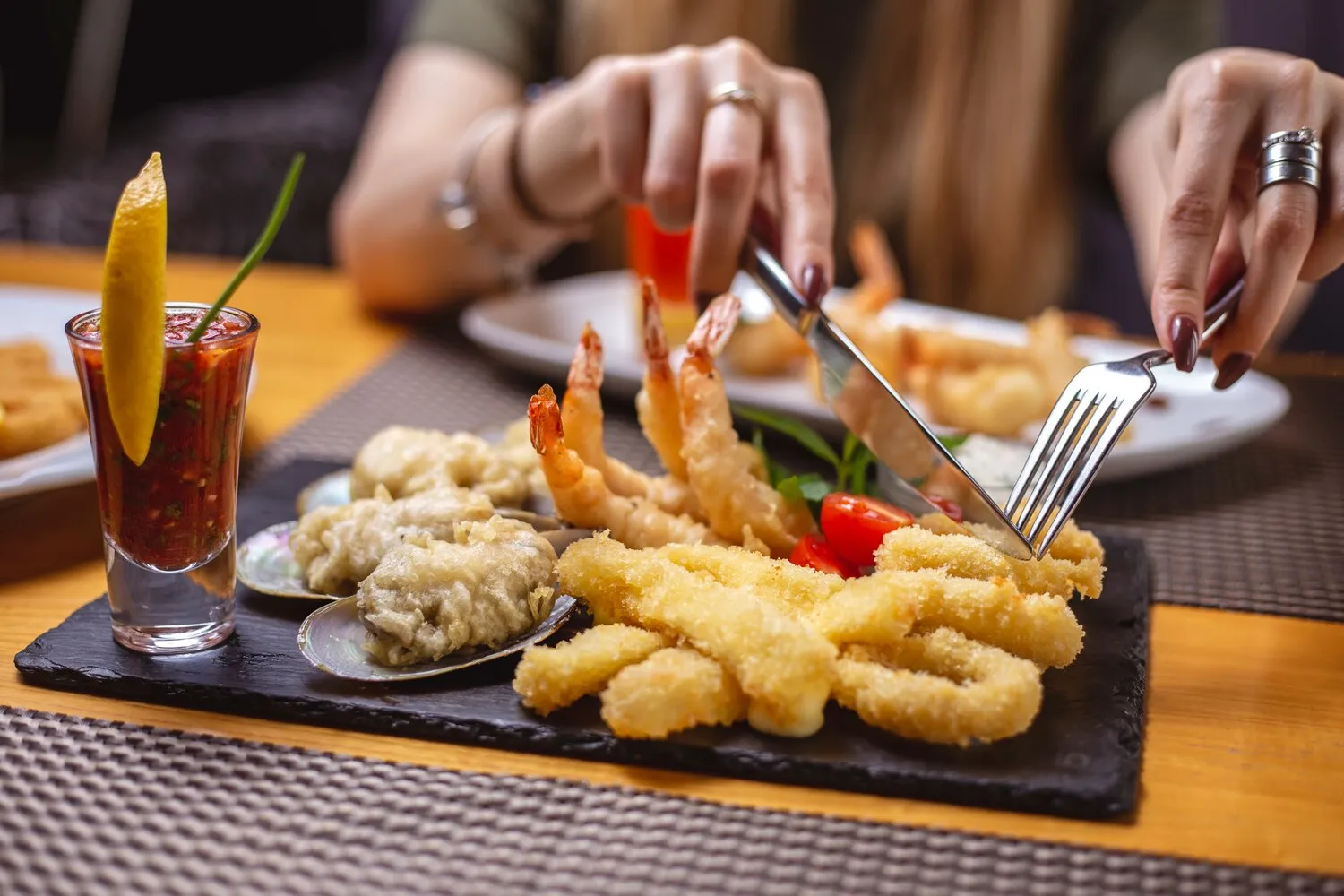
Falafel Plate
A plate including falafel, hummus, salad, and possibly pita bread or other sides.
Nutrition Facts
* The % Daily Value (DV) tells you how much a nutrient in a serving of food contributes to a daily diet. 2,000 calories a day is used for general nutrition advice.
The history of falafel is complex and debated, with roots potentially stretching back to ancient Egypt where fried bean patties were a common food. However, the falafel we know today, made primarily with chickpeas or fava beans, gained prominence in the Middle East, particularly in Egypt and Palestine, becoming a staple street food and a symbol of national identity in many countries. Its popularity spread globally in the 20th and 21st centuries.
The Falafel Plate is more than just a meal; it's a cultural touchstone in many Middle Eastern countries, often associated with community, accessibility, and national identity. It is a common street food, a casual meal enjoyed with family and friends, and a symbol of culinary heritage.
National Identity
In countries like Palestine and Israel, falafel is seen as a national dish and a symbol of cultural identity, with variations reflecting local traditions and preferences.
Street Food Culture
Falafel is a quintessential street food, readily available from vendors and small restaurants. It is a quick, affordable, and satisfying meal for people from all walks of life.
Vegetarian/Vegan Staple
Falafel is a popular and widely available vegetarian and vegan option, making it a staple for those with dietary restrictions.
Social Gathering
Sharing a falafel plate or wrapping falafel in pita with various toppings is a common way to enjoy a meal with friends and family, fostering a sense of community.
The Falafel Plate offers a vibrant tapestry of flavors and textures. It's savory, earthy, herbaceous, and refreshing all at once.
The falafel itself provides a deep, savory, and slightly nutty base, often spiced with cumin, coriander, garlic, and onion. The hummus adds a creamy, rich, and tangy element due to the tahini and lemon juice. The salad, typically a chopped cucumber and tomato salad with parsley, provides a refreshing counterpoint with bright, acidic notes. Pickled vegetables often contribute a vinegary tang and crunchy texture. Pita bread offers a soft, slightly chewy vessel to scoop up all the flavors.
Soaking the Chickpeas
Never use canned chickpeas. Soak dried chickpeas for at least 24 hours (and up to 48) to ensure they are properly hydrated, which is crucial for achieving a light and fluffy texture. Do not boil the chickpeas.
Fresh Herbs are Key
Use plenty of fresh herbs like parsley and cilantro to add brightness and flavor to the falafel mixture. The herbs should be finely chopped.
Temperature of the Oil
Maintain a consistent oil temperature (around 350-375°F or 175-190°C) for frying. If the oil is too cool, the falafel will absorb too much oil and become greasy. If it's too hot, the outside will burn before the inside is cooked.
Don't Overmix
Avoid overmixing the falafel mixture, as this can result in a dense and tough texture. Pulse the ingredients in a food processor until coarsely ground.
Pita Bread Warmth
Warm the pita bread before serving. This makes it more pliable and easier to fill with falafel and toppings.
Explore additional Platter dishes and restaurants
Explore PlatterDiscover top dining spots and culinary experiences in Malmö.
Explore MalmöLearn more about the food culture, restaurant scene, and culinary heritage of Sweden.
Explore Sweden